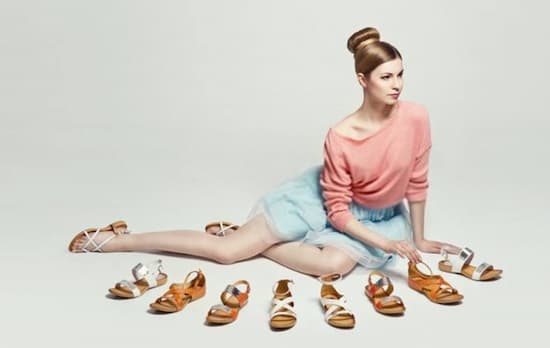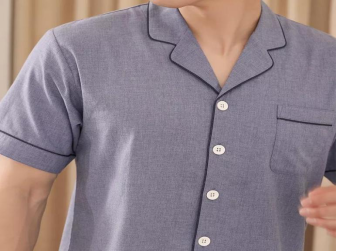Home → fancy clothes → Telfar: "I don't bel...
Telfar: "I don't believe in fashion as something exclusive"
She is provocative, challenging conventions. Defender of inclusion and democratic fashion, the most powerful designer in American urban culture breaks the mold with his affordable luxury. “I want to do unusual things”, he insists in this interview in the back room of a show in Florence.
Corsini Palace, Florence. Nine in the morning on January 9. The press conference for the New York firm Telfar begins in an hour, but a lucky chain of errors leads a small group of Spanish journalists to show up ahead of schedule. In the middle of one of the seventeenth-century halls, the remains of the gargantuan dinner are still awaiting with which, apparently, the designer Clemens Telfar (New York, 35 years old) wanted to entertain the 40 artists who came from the United States to collaborate in the parade that will be held that same day sponsored by Pitti Uomo, the most important men's fashion fair in Europe. Trays of half-eaten ribs, cigarette butts on plates, a boar's head on the floor, and next to it a bathtub filled—apparently—with wine and flowers. The scene evokes the hangover of a coven more than the jam session that, according to the creator, took place the night before. It is tempting to think that it is a set design, pure performance. But Telfar assures that it is a kind of experiment: “We put microphones on the table as if it were the United Nations and encouraged people to improvise, some just listened, others started making music together for the first time. The parade was the unplanned and natural result of that dinner. It was like some leftovers, that's why we left the food and the bottles”.
Indeed, hours later, the designer seated buyers and international press around the slightly altered remains—no cigarette butts—of the party. He and he made the models parade between popped pumpkins and bunches of grapes while the musicians played live. Men and women of different races and complexions dressed in clothes that fit in both wardrobes: sweatshirts with huge logos, braided T-shirts, pants that went from jean to mid-length puffer jacket, blouses with baroque collars. It may seem extravagant, but it can also it was to launch a collection without gender; betting on the see now, buy now (which consists of putting the garments on sale right after the parade); defending the normcore aesthetic (how normal people dress), or setting up a brand as a collective creation project in 2006, when Telfar emerged.
Then many said it was crazy. But the designer always knew: "To sell he did not need to make dresses." Time has ended in agreeing with him: today all the concepts he has always defended —inclusion, equality, diversity, accessibility— have been assumed by the most orthodox brands. From Tommy Hilfiger to Stefano Pilatti. “They ended up catching up with us,” he jokes backstage at his show. And it is that Telfar represents an unusual profile in the ancient and inbred fashion industry: a figure of the New York underground LGTBIQ community, son of Liberian immigrants, with a creative universe that has been the subject of a retrospective at the Berlin Biennale four years ago. years and willing to blow up the system from within. For all these reasons, the creator is connected to the new sensibilities in a way that many brands artificially and unsuccessfully try to force, and with which few designers can compete. A quality that has not gone unnoticed and that earned him the 2017 Council of Designers of the United States (CFDA) award. It's no secret that the heavyweights are watching him more and more closely; especially since he has turned one of his bags into "an international success", as he admits without false modesty. It is a wide model —later it would be manufactured in different sizes—, simple and comfortable, with the logo of the brand printed on center.
In principle, nothing new under the sun. If it weren't for the fact that it has been cataloged by Dazed and Confused magazine as "recent fashion history" and because it is one of the favorites of Rihanna, Beyoncé and anyone who has the 150 euros it costs. Its price is undoubtedly one of the keys to its success, according to Telfar, and also what makes it such an extraordinary phenomenon. “It is very unusual that, being affordable, it has become a status bag, that makes you feel special and proud when you carry it.” It went on sale in 2017 and for the first two years “nobody wanted it”, but once again, Telfar decided to persevere and trust his instincts. “The buyer fell in love, the design was permeating. First the old ladies wanted it, and now the skaters want it."

Launching an iconic bag for less than 200 euros —and succeeding— is a challenge to the rules of the game in the fashion industry. Her bag is cool because it's affordable, not in spite of it. And that exemplifies the provocative stance the firm has taken since its inception. Their slogan “it's not for you, it's for everyone” speaks to a desire to undermine the elitism that defines the industry. While most creators shun this label like the plague, for Telfar, being commercial—selling, being accessible financially and creatively, being liked by as many people as possible—is the most revolutionary stance a designer can take today. . “I don't believe in fashion as something exclusive. Everyone has style. If what you want is to intervene in people's daily lives, it has to be through something that can reach everyone. In the debate about what is fashion and what is not, I rather position myself in what is not fashion”.
Many of her buyers wear the Telfar bag—and clothing—simply because it's on-trend, but for others it's also a statement. Vestir de Telfar launches a message that has to do with a disruptive attitude, with sharing concepts such as democratic fashion. “Fashion has historically fulfilled the role of separating people, be it by class, gender, etc. From the point of view of inspiration and culture it is possible to be more democratic: recognize where power, energy and genius come from, and not always try to elevate the style of one group of people to sell it to others. But the question of who has access to the clothes is more complicated because the economic factor is decisive there”. Despite this unquestionably vindictive speech, Telfar assures that he is not interested in politics in the least. “I don't even vote. I only make my story, ”he explains before bursting into laughter that resounds on the roofs of the Corsini palace.
The theoretical part of his brand-project seems more coherent in the hands of his partner Babak Radboy, a Seattle-raised Iranian artist and co-founder of the Shanzhai Biennale, the art collective that once used his booth at the Florence art fair to sell a property in London for 150 million dollars. That brain has held the position of artistic director of Telfar since 2013. And he defends that the brand's desire to integrate everyone has to do with the fact that those responsible for it have always been excluded. Because Telfar's story is the perfect tale of Cinderella - in this case, self-revenge - that the fashion industry loves and fears at the same time.
Born in Queens to Liberian immigrants, he spent five years in this country until civil war forced his family to return to New York. There he lived in a three-bedroom apartment with 15 other relatives before moving to Maryland. At the age of 15, his mother refused to buy him a crop top and he decided to make one for himself. “I didn't feel comfortable wearing clothes that were supposed to be for girls. But I liked it, so I designed one for myself. I have always been very interested in women's clothing because I like the freedom they convey, not like the masculine ones. So we could say that genderless started with me,” he recalls.
After high school, he returned to New York, where he came into contact with a community of alternative artists and creatives, including fellow designer Shayne Oliver, founder of the Hood by Air brand. Celebrated as the great hope of American auteur fashion some seven years ago, she championed a new generation of designers who challenged creative conventions and paved the way for other brands like Pyer Moss and Telfar. Clemens and Shayne were a couple during that time and still maintain such a good relationship today that the former thanked the latter —through the invitation to his show— for his collaboration on the collection presented in Florence. In those years, Telfar studied Economics at Pace University in New York and sold Bob Marley T-shirts in Downtown stores to pay for his own project. A brand that sought to reflect a “purely American” style and unapologetically linked to the culture of the mall. “When you live in the suburbs, your options are limited. You end up going to the same stores as everyone else, and the challenge is to create with those elements something that doesn't look like the others”. Telfar remembers those early years with pride: “I used to go to class at six in the morning. Then I would work on my collection, DJ until four in the morning and start again”.
He is a self-made man, but he embodies an endangered American dream. “The industry is just as racist as it was when I started. But I go to mine, nobody has given me an opportunity, I have earned it myself by working ”. And his resume, which has become a source of inspiration for the traditional industry, proves it: in 2015 he was looking for a sponsor for his show and decided to contact the White Castle hamburger chain. He called the customer service number directly and got the money to throw an after-show party at his Times Square restaurant. The event—there are videos on YouTube—turned their afterparties into a phenomenon that everyone wanted to be a part of. Later, they would sign a contract to manufacture the uniforms of White Castel's 30,000 employees.
Another example: three years later, they would develop a capsule collection for Century 21, the most popular outlet in New York, through one of their “democratic fashion experiences”. The experiment consisted of showing the public all the prototypes and letting them vote —through Instagram or analogically— which ones would finally be manufactured. “Right now we couldn't afford that exercise. At the time it made sense, but today we know that when something runs out it's good, and that's the feedback we work with." He assures that he wants to grow "without fear, as much as possible", but at the same time he insists that he prefers to maintain his status as an independent firm and not join the portfolio of a large fashion group. He doesn't want to sell himself. If you manage to make this formula work as well, you will have to start studying your case in business schools. "I want to be everywhere and do unusual things."
Telfar ends the interview. He has to prepare for the party that he will celebrate that night in a nightclub in Florence with fish tanks under the bars. “We don't have millions of dollars or investors. We have perfected and opted for what no one else has and that money cannot pay for”. It could refer to the impudence, the pulse of the new generations or to what some consider one of the most enlightened visions of what fashion will be like in the next decade. But we are talking about people dancing between clown fish until dawn and the heads of wild boars.







